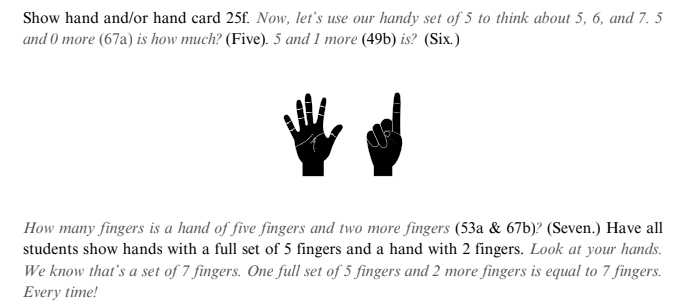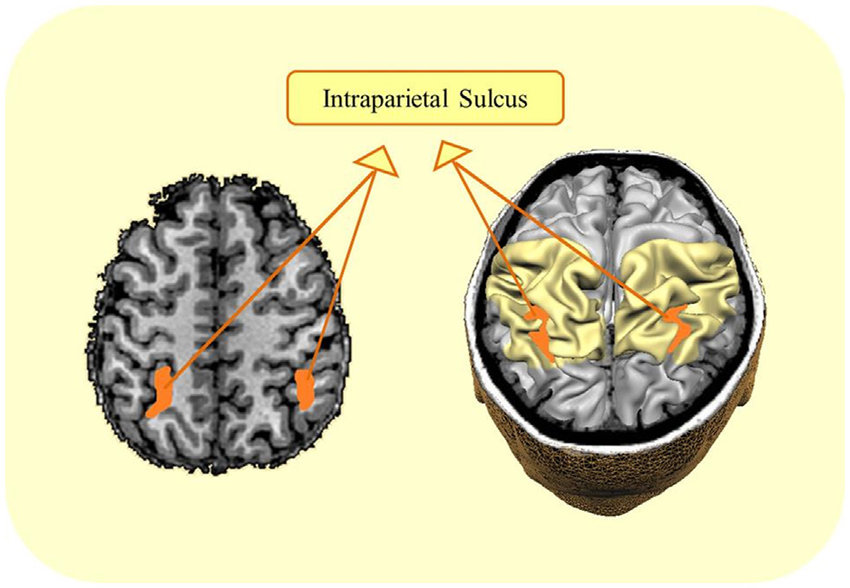March 26, 2025
I can’t tell you how many times I’ve seen students sneaking a quick finger count under their desk, like they’re doing something wrong. Have you ever noticed a kid counting under the table, glancing around like they’re about to get caught? Some kids have been told not to count on their fingers, that it’s “babyish” or that “real” mathematicians don’t do it.
But finger counting isn’t a bad habit we need to break. It’s actually a really powerful tool that helps students build number sense.
Studies have found that kids who use their fingers early on tend to develop stronger math skills later (Terada, 2020). Instead of discouraging it, we should be leaning into it and helping kids use their fingers strategically so they can build a solid foundation for more advanced math.
And finger counting isn’t just for beginners. It can be a flexible, visual, and conceptual tool that supports learning across different areas of math. When we wrote The Fire & Wire Way, we incorporated fingers into daily math routines, making it an intentional part of how kids engage with numbers.

Fingers are much more than just a way to keep track of counting; they help students recognize patterns, compare amounts, understand unit, and even deepen their understanding of operations.

The brain science behind finger counting
For years, there’s been a debate about whether finger counting helps or hinders math development. But study after study points to the same conclusion. It helps, especially for younger learners.
- In one study, kindergarteners who were explicitly taught to count on their fingers saw a huge jump in their math accuracy, from 37% to 77% in just two weeks (SRCD, 2023)!
- Another study found that kids who combined finger-counting exercises with number games outperformed their peers in key math skills, including counting, ordering, comparing, and adding numbers (Terada, 2020).
- Neuroscience research shows that using fingers strengthens connections in the brain, reinforcing a child’s ability to understand numbers at a deeper level (Mathnasium, 2022).
Other studies tell us even more about why finger counting is so effective from a brain-based perspective:
Multisensory Integration: Ever notice how kids will hold up their fingers as they whisper-count under their breath? That’s their brain making sense of numbers through touch and movement. In The Fire & Wire Way, we use this to support subitizing (the ability to instantly recognize quantities) to help students instantly recognize small quantities by associating them with their fingers. They start seeing patterns instead of counting one by one (Frontiers in Psychology).
Neural Correlates: Brain imaging studies show that children with strong finger sense, an awareness of their fingers and their use in counting, usually have reduced cognitive load when solving math problems. That means kids who use their fingers efficiently actually free up brainpower for deeper thinking. When fingers are used as unit markers (for example, in skip counting or multiplication), they help students build fluency with number structure (Neuroscience News).
Numerical Representation in the Brain: The intraparietal sulcus (IPS), a region of the brain responsible for number processing, is activated when students engage in finger counting. It’s like the brain and the fingers are working as a team to make numbers more concrete. Connecting fingers to math strategies, like grouping, decomposing, or structuring sets, can reinforce these pathways (Wikipedia: Intraparietal Sulcus).

So when kids use their fingers, they’re not just “counting”. They’re building mental models of numbers in a way that aligns with how the brain processes math.
Finger counting as a tool in the classroom
When we intentionally incorporate finger use into classroom routines, they become a tool for understanding. Here’s how we can use fingers across different areas of math:
Subitizing with fingers
Instead of counting fingers one by one, students can learn to see small groups (e.g., three fingers as a unit instead of 1-2-3). Connecting finger patterns to dot images, five-frames, and ten-frames helps build quick recognition of number structures.
Comparing quantities
Holding up fingers to show two different values allows students to see the difference between amounts, making comparisons more intuitive. This helps students develop inequality concepts (more than, less than) through direct visual representation. We created some fun games around this idea in The Fire & Wire Way.

Operations and number structure
Fingers naturally help students understand part-part-whole relationships. For example, five fingers can be seen as 3 + 2, 4 + 1, or 5 + 0. Encouraging students to hold numbers on their fingers and “count on” can strengthen addition and subtraction fluency.
Fingers as a unit marker
In multiplication and division, fingers can represent groups (e.g., three fingers for “three groups of”). This helps reinforce unitizing, where students learn to see sets instead of single units, which is key in place value and fractions.
By using fingers intentionally, we shift them from being a crutch to a tool integral to deeper mathematical reasoning.
Rethinking how we talk about counting on fingers
Finger counting isn’t a sign that a student is struggling. It’s a sign that they’re making sense of numbers in a way that works for them. Have you ever thought about how often adults use their fingers for math? Keeping track while counting money, keeping score in a game, figuring out a tip at a restaurant…
Instead of rushing kids to stop using their fingers, let’s make sure they’re using them strategically, and then support them in transitioning to more advanced strategies when they’re ready.
We can incorporate finger use into structured classroom routines: subitizing, comparing, operations, unitizing, and set structures to help students understand how numbers are composed, leading to deeper understanding.
So next time you see a student counting on their fingers, don’t tell them to stop. Instead, ask what they’re thinking. Help them make connections. Show them the next step. Because when used well, finger counting isn’t a crutch. It’s a tool for building mathematical confidence and fluency.
- Mathnasium (2022). Finger Counting: A Great Tool or a Hindering Habit? Retrieved from Mathnasium
- Society for Research in Child Development (SRCD) (2023). Research Shows Finger Counting May Help Improve Math Skills in Kindergarten. Retrieved from SRCD
- The Recovering Traditionalist (2021). Helping Students Use Fingers for Math. Retrieved from The Recovering Traditionalist
- Terada, Y. (2020). A Case for Finger Counting. Retrieved from Edutopia
- Frontiers in Psychology (2011). Finger Counting and Numerical Cognition: A Review. Retrieved from Frontiers in Psychology
- Neuroscience News (2018). The Role of Finger Sense in Math Skills. Retrieved from Neuroscience News
- Wikipedia. Intraparietal Sulcus. Retrieved from Wikipedia
- Russo, J., Faulkner, V., & Eleczko, S. (n.d.). The Fire & Wire Way. Lulu Press.